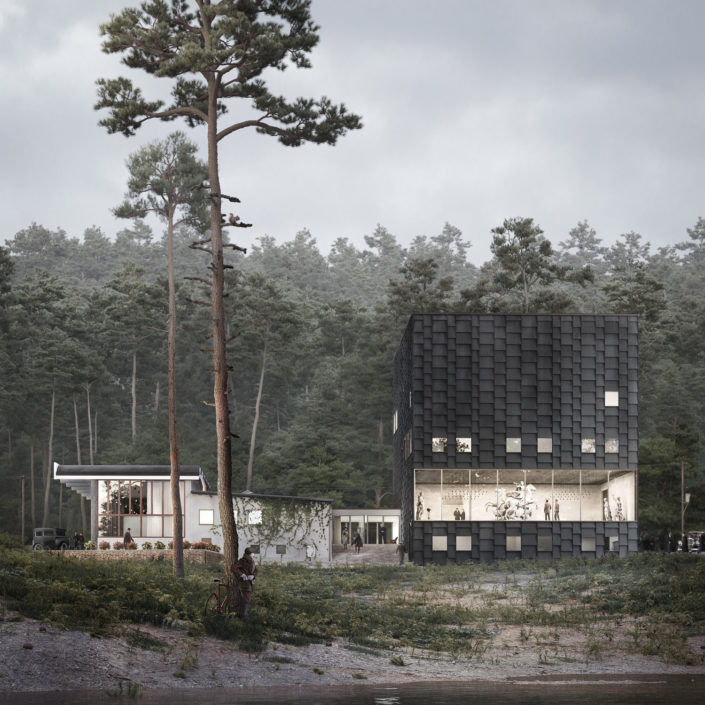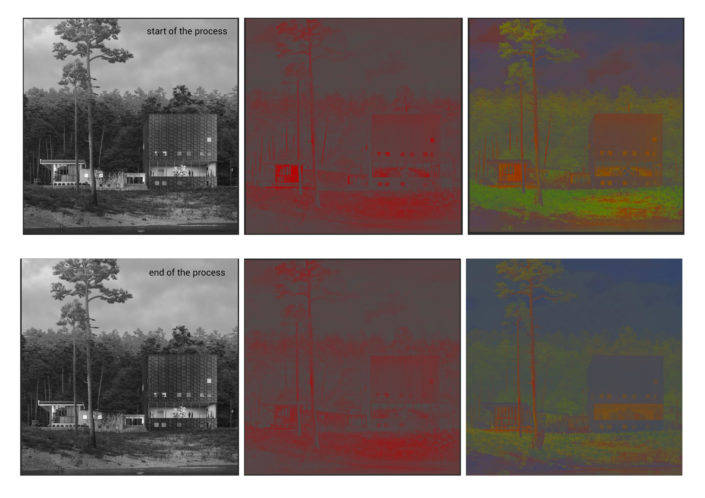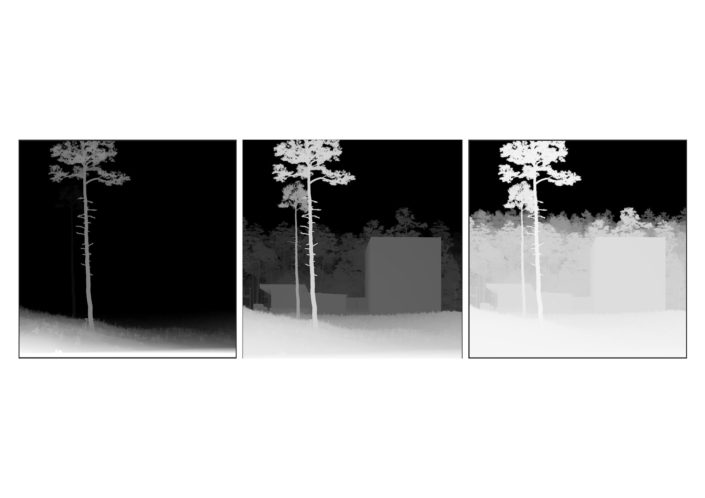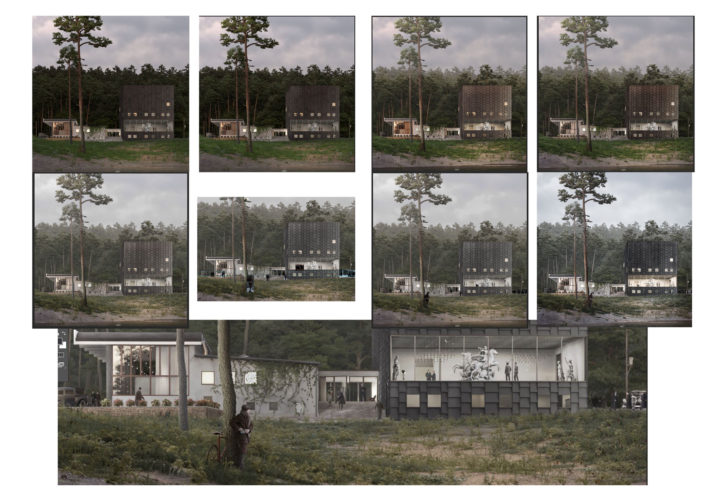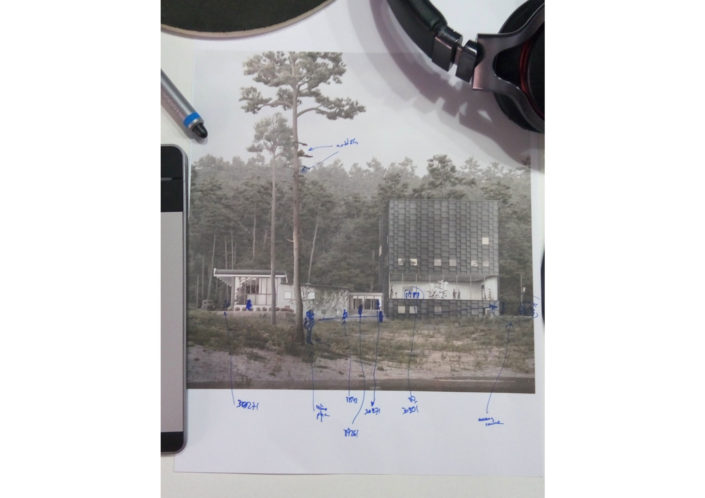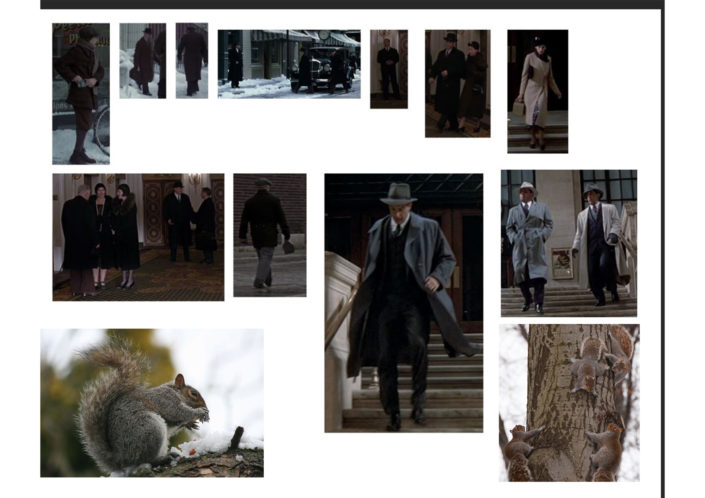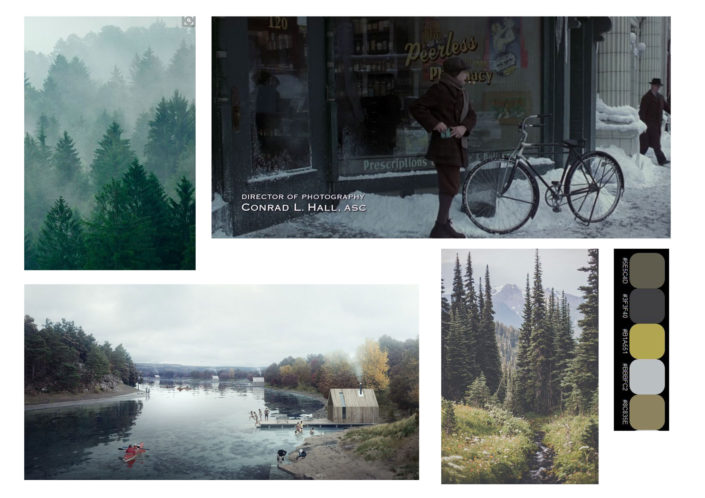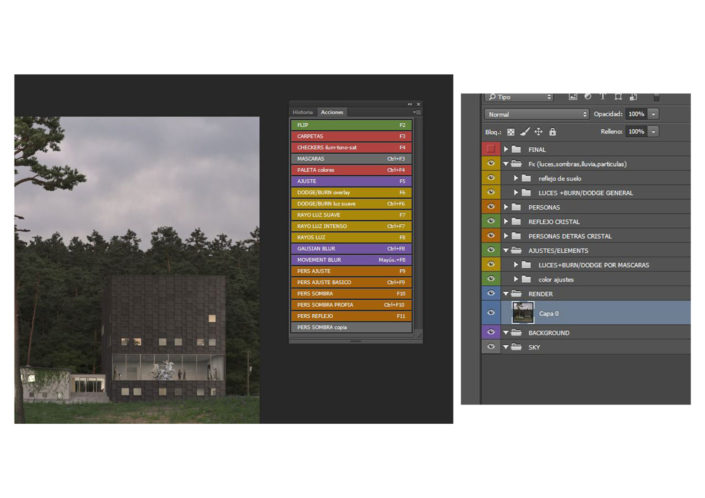Postproduction is my favourite part of the process. I guess I am not alone in this 😉 Everything is so flexible and inmediate in comparision to 3dsmax that it really mean a big breath of fresh air to the process.
The first step when working in photoshop is to use one of my actions to create the project folders. Needless to say that, if the organization in 3dsmax is important, in photoshop is essential. A correct folder structure is a must. Also using pre-programmed actions saves a lot of time for mechanical processes like switching masks to channels (img.1)
I set up masks for everything in my image. I do not want to waste time making selections and if I have time I will retouch all the elements that appear on the scene.
Another essential part of my workflow with photoshop is the use of “helpers”. These “helpers” are filters that isolate value, saturation and tone. They are really really usefull when giving unity to all the different elements in the images. They also become necessary to integrate the assets properly. (img.2)
One more thing that is also really important: Getting the zdepth element in 32bit. This allows to have different “versions” of the zdepth allowing you to a better control of the space between the camera and the objects. Zdepth works great for depth of field, but it has many other interesting uses. You can simulate the “atmosfere” with different zdepths and give profundity to the image. And is also great as a mask for let’s say saturation, value or whatever. (img.3)
Introductions appart, it’s time to get messy. I start working in the EXR 32bit file. I create different exposures versions from the original and mask them. Then I start “painting” light and darkness as if I were manually building a high dynamic range image. I usually get free license here and star being more artistic and less square-head. (Whole process can be seen in img.4).
Next is using the render elements globally. Reflection, Total light, global ilumination, speculars… They will almost always enhance the image in no time.
Next is adjusting the items one by one. I like to use levels and the burn and doge tool to sculpt some more light.
In this last step I also adjust the global value of the image with the help of the value “helper”
Next is adjusting the saturation of the items so they appear homogeneous in the imgage. Saturation helper used here.
Now it’s time for the tone. I choose my color palette and match it with the tone helper. As I said, these guys are very usefull.
When I have a catchy image and I’m happy with the mood it’s time to insert the assets:
As I did with the ilumination stage, I do a sketch of the assets that I want in the scene and their importance (img.5). It is about to tell a story so there must be a protagonist. Mine is going to be a newspaper boy who has already finished his work and decides to relax in front of the new museum building. Everyone in the city is talking about this weird cube that hosts a renaissance sculpture exposition. The kid is just there leaning on a tree smoking his pipe when something calls his attention.
Once the story is set up (I’m sorry to disapoint, no gangster firing this time :D), it is time to get the assets themselves.
As I said in the concept stage, my image is based in the 1930’s… so to get people cutouts I am basically using some scenes from my beloved movies. I just have to look for the perfect positions, camera angle and lighting conditions of my assets and export the frame where they are (img.6).
I merge them in the image using my old friends “the helpers” to integrate them.
Lastly I add some extra effects as depth of field, LUTS and final retouch in Camera Raw and voilá! C’est fini.
Rush!!












